The dramatic footage from a humanitarian crisis rarely features chemists, but they can play a vital role. Fiona Case is inspired by some examples
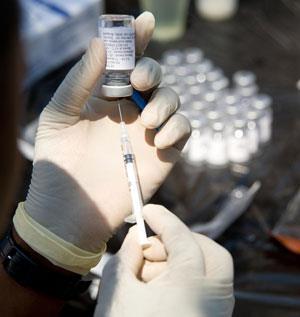
In 2004, Bego Gerber, a retired chemist in California, US, saw an article in Chemical and Engineering News about carbohydrate-based vaccines. He was appalled to learn that a new typhoid fever vaccine was sitting on the shelf while over 10 million people were infected with a disease that has a 12–30% mortality rate if untreated. Gerber wondered how many other examples there were of chemistry that could address a humanitarian crisis, but were not considered to be profitable enough, or not used because no one had connected the dots to realise its value. He wrote a letter to the editor proposing a group of ‘chemists without borders’ (deriving the name from the well-known Médecins Sans Frontières, or Doctors Without Borders).
‘We see doctors, nurses and engineers responding to a crisis and wonder if there is something we can contribute,’ says Gerber. ‘Chemists can, and do, find solutions to humanitarian challenges – hunger, poverty, pollution, disease – sometimes using off-the-shelf chemistry that has not been considered for humanitarian issues, or by developing new chemistry.’
Steve Chambreau, a chemist working at the US Air Force Research Laboratory at Edwards Air Force Base in California, responded to the letter, and the two co-founded the group, naturally called Chemists Without Borders. ‘We wanted to make people aware of issues and bring together ideas to create solutions. We also wanted to highlight and celebrate chemists working to find solutions for humanitarian challenges around the world,’ says Chambreau.
Clean and safe
The organisation’s main focus today is in Bangladesh, where concentrations of arsenic in water in parts of the country can change dramatically to toxic levels depending on well depth or rainfall. Chemists Without Borders has a number of members in Bangladesh, looking for inexpensive test kits that will permit more frequent testing of water sources. The group is experimenting with crowd-sourcing to find new solutions to this problem.

‘We were contacted by Idea Connection. They offered us $500,000 [£300,000] worth of research. We came up with a wishlist of five chemistry-related developments that would help solve humanitarian problems,’ says Chambreau. Idea Connection offered these to their network of problem solvers. ‘We will see the results at the end of March,’ says Chambreau. ‘But we already know there are several teams working on the “arsenic penny a test” challenge – they have sent us questions. We need a technology that is inexpensive and also culturally accessible. The most sophisticated solution may not be the best.’
Once a new technology has been developed, the challenge is to get people to use it. ‘In Bangladesh, most people are aware of arsenic in drinking water, but they don’t know what can be done,’ says Chambreau. ‘It’s an issue of education.’
The group has convened five teams of chemists at state and community colleges around the US who are creating and testing hands-on demonstrations for high school students, using their non-scientist friends as guinea pigs. ‘We are using currently available technologies – test kits donated by Hach Company and filters donated by Manob Sakti Unnayan Kendro for this project,’ Chambreau says. ‘We want students in Bangladesh to test their local water, and, if arsenic is present, to filter and test again. We want to demonstrate that there is a problem, but there is also a solution.’
The teams have developed lesson plans and videos, which will be taken to Bangladesh by Bengali speakers who will evaluate their effectiveness in schools. ‘If they are a success we will be working with Unicef to scale up to regional and national distribution,’ says Chambreau. ‘Unfortunately, that is on hold. The area is in turmoil after the recent elections. We will have to wait until things settle down.’
Environmental remediation
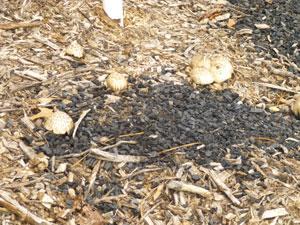
Chemistry plays a vital role in environmental remediation after natural or man-made disasters. Ted Wysocki is a materials and process chemical engineer at South Meadows Farm and Research Center in Massachusetts, US, and an enthusiastic advocate for horticultural charcoal, also known as biochar.
‘Biochar is made from pyrolysing (roasting) agricultural waste. It is almost as effective as activated carbon for absorbing and breaking down pollutants, but much more affordable,’ says Wysocki. In the wake of the Fukushima nuclear disaster, individual farmers in Japan can produce and use this material to absorb radioactive nucleotides and keep them out of plants growing in contaminated soil – and they are doing so.
Industrial pollutants such as polychlorinated biphenyls, dibenzodioxins and dibenzofurans are also captured and concentrated. ‘When they reach sufficiently high levels, colonies of microbes can be established and supported in the charcoal to break down the toxins,’ explains Wysocki.
Several groups are working to optimise production methods. Researchers at the UK Biochar Research Centre, based at the University of Edinburgh, are working to understand how biochar functions in soil. A team lead by Baoshan Xing at the University of Massachusetts, Amherst, US, is forging the link between the type of agricultural waste used, the processing temperature and the final physical structure of the biochar. Researchers at Dow AgroSciences in Indianapolis, US, are linking processing parameters with chemical structure.
Wysocki advocates further research into applying horticultural charcoal for growing foods in desert environments and increasing production in areas facing droughts due to climate change. ‘You can grow food with minimum levels of irrigation,’ he says. ‘I’ve mixed sand and biochar and created material with field capacity for absorbing water that equals the most fertile soils.’
Soils treated with biochar are also more salt tolerant. The application of biochar in tsunami-flooded coastal fields allowed food production to resume. ‘If we get this right we may be able to irrigate food crops with brackish water,’ says Wysocki. That’s going to be important. Even conservative estimates predict an additional 486 million people – more than 7% of the world’s present population – will be threatened with severe water scarcity by the end of the century.
The world needs chemists
Chemists can address humanitarian challenges by providing solutions to specific problems (see boxes below for examples), but most crises also need the financial, political, or organisational muscle of the large aid organisations or government agencies. Sarah Green, a chemistry professor at Michigan Technological University in the US, is currently serving as a Jefferson Fellow with the US State Department and the Agency for International Development. ‘For any international development project, the long term solution to any global or humanitarian problem will be based on science, and all have aspects of chemistry,’ she says. ‘People with a chemistry background and an international viewpoint are extremely valuable. We need more chemists working with government and non-governmental aid organisations.’
A recent example is the $50 million (£30.5?million) US initiative to reduce pollution from the traditional wood- or charcoal-burning cooking stoves used in many developing countries. Chemists played a key role in creating this initiative by characterising the fine particulate carbon and organic particles that are generated by the stoves, highlighting the health implications for people who use them, and advocating for international support to develop alternatives.
In common with much aid work, one of Chemists Without Borders’ central tenets is that chemical solutions for humanitarian crises can best be found when researchers work with local experts who can provide input and parameters (cost, ease of use, cultural and environmental issues) for successful solutions.
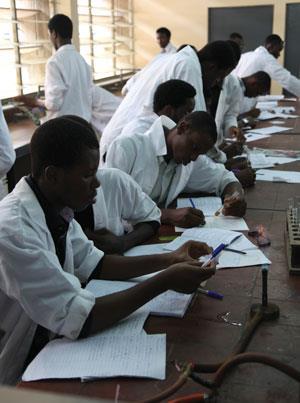
The Royal Society of Chemistry’s Pan Africa Chemistry Network (PACN) provides excellent examples of the success of this approach. ‘We are working to support local scientists solving local problems, such as access to safe drinking water, and treatments for diseases,’ says Alejandra Palermo, open innovation manager at the RSC.
The group has been involved in a number of joint projects. Project Splash was started in 2008 with Unilever. Researchers in South Africa and Kenya have been optimising strategies for using grey water – waste from laundries – to irrigate food crops and to develop new cleaning products that work with less water. In its second year of partnership with Procter & Gamble, the PACN is helping to set up an Analytical Centre of Excellence hub at the University of Lagos in Nigeria, providing analytical equipment and resources for training and research. ‘In conversations that that the PACN has held with scientists across Africa, it is clear how important analytical skills and capacity are,’ says Palermo. ‘Chemical analysis plays a vital role in ensuring access to clean water, food and air. It enables us to raise safety standards, improve resource efficiency, minimise environmental impact and stave off humanitarian crises in the future.’
Having access to an international network is also important. ‘African chemists are not well connected,’ Palermo says. ‘Researchers don’t have opportunities to share their results and resources, to contribute their insights into the solutions for local challenges.’ The PACN helps them to form bonds across Africa and beyond, organises workshops and conferences, and provides fellowships so that researchers can visit and collaborate with groups in other parts of Africa or in the UK. The RSC also provides free access to the chemical literature for educational and non-commercial research institutions through the Archive for Developing Countries programme.
Lighting for Africa
About 600 million people across Africa have no access to electricity. They use inefficient kerosene lamps, which provide poor lighting for reading and doing homework, and emit hazardous carbon particles (smaller than 2.5µm) and toxic fumes. The problem was identified some time ago and a joint World Bank–International Finance Corportation programme was launched in 2007 to improve access to clean, affordable lighting.
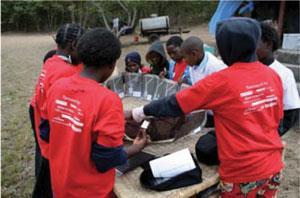
In 2009, Frederik Krebs at the Technical University of Denmark (DTU) looked at the solutions that had been proposed and knew he could do better. ‘They were rugged, high performance, clean, solar power systems: top marks in all respects except cost. Each unit cost as much as a year’s supply of the traditional fuels – the people can’t afford them!’ he says. Krebs is an expert on polymer organic photovoltaics (OPVs). He could produce a low-cost OPV solar light. It wouldn’t be as efficient at converting sunlight into electricity – but there was no lack of sunshine in Africa. ‘Our aim in 2009 was €3 per unit [£2.50], we can now make the OPV for less than €1 per unit. I was obsessed with reducing all the costs – even the shipping costs,’ he says. ‘The units don’t even need an envelope; you just put on an address label and send them.’
Krebs worked with students in the DTU business school to create a micro financing scheme for the lights and to do a life cycle analysis. ‘Naturally there is an environmental cost for creating OPVs, but there is significant benefit if it replaces a kerosene lamp, and the quality of light is much better,’ he says. The students took A4-sized flexible lamps to Zambia for field tests, and later took postcard and credit card sized lights to Mali and Chile. They soon found the value of simple self-contained units, and the need for simple instructions on the back. ‘What is intuitive to someone who has grown up with technology is not at all obvious – recipients did things that we hadn’t predicted, like attempting to charge the units in a camp fire,’ says Krebs.
The group is now working on an inflatable solar cell that provides more power – sufficient for charging cell phones, using a microwave or watching TV. They are working closely with non-governmental organisations in Africa, and one of Krebs’ colleagues will be heading there shortly for field tests. But Krebs won’t be joining her. ‘I wouldn’t be effective,’ he says. ‘As a chemist, my time is best spent in the lab and in really understanding the needs – then I can develop technology that will really solve the problem.’
The world needs you
So what are the most pressing issues awaiting a chemistry solution? Green highlights the need for inexpensive and easy to use test kits for mercury, lead, fine particulate carbon and other pollutants in the air, water and soil. ‘People are more likely to take action, to demand change, if they can measure pollution for themselves,’ she says. A simple test for nitrogen and phosphorus content in soils would also be valuable. Eutrophication of freshwater and coastal ecosystems, caused by over-use of fertiliser, is a rapidly growing environmental crisis that will have a strong humanitarian impact.
‘We also need alternatives to the use of mercury in small-scale gold mining,’ says Green. ‘This is the largest source of mercury in our environment, it brings terrible consequences for the health of the miners and their communities, and longer term harm for the rest of us.’
Other challenges include better ways to extract useful materials from waste streams such as discarded electronics; new processes for small-scale plastics recycling; inexpensive tests for counterfeit medications and adulterated food; and better batteries to enable developing countries to electrify using renewable solar and wind power without an expensive electricity grid and power stations.
Gerber believes the key is to get chemists thinking about and discussing humanitarian challenges. ‘Imagine the ideas and solutions our global chemistry community might invent and implement if even a small percentage were mobilised,’ he says.
Fiona Case is a science writer based in San Diego, US

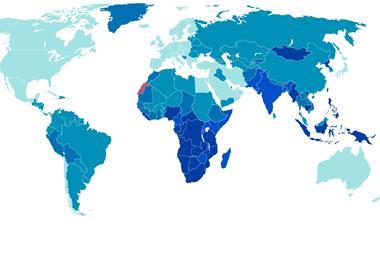









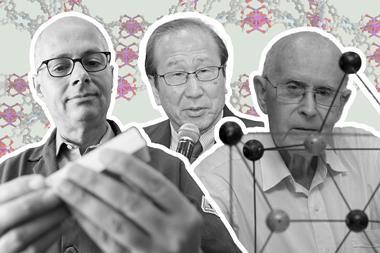
No comments yet